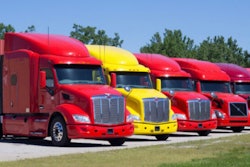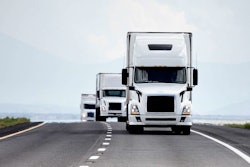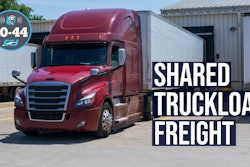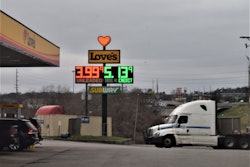Since supply chain issues are hampering the production and delivery of new equipment, fleet managers are having to make tough decisions about which assets to keep.
The decision on which assets to keep and which to replace needs to be a strategic one, and there are multiple factors to consider. The annual cost difference between new and old trucks for maintenance and repair can be as much as $10,500 or more. Since new trucks typically have better fuel economy, the difference of fuel costs can be $5,500, considering a price of $5/gallon for a truck traveling 100,000 miles a year. The annual fixed cost on an older truck is going to be cheaper than that for a new truck, perhaps around $8,500. The annual running costs of an older truck can be some $7,500 higher than the running cost of a new truck.
However, choosing which trucks to keep is more than the matter of truck age or mileage. You need to identify the trucks costing you the most to operate and separate them from those costing the least.
Consider truck cost per mile. There may be a good number for trucks running 100,000 miles a year at around 70 cents per mile, but not every truck will be operating at 70 cents. Some may be at $1 a mile. When making replacement decisions, you likely will choose to part with trucks that cost the most to operate.
In addition to conducting a run/cost comparison, fleet managers can create a data model considering the operational performance and running costs for each truck. The data model involves creating an index for each factor you would like to measure. A composite index can be created based on all chosen factors (indices), resulting in a truck ranking system.
Begin by collecting the current fuel economy data for each truck and order them from best fuel economy to worst, then assign an index number of 1 for the truck with the best fuel economy and increase the number as you work your way toward the least fuel efficient. In a fleet with 100 trucks, for example, the least full efficient truck would be 100. Trucks between these get ranked based on where they fall on the fuel economy scale. Do the same exercise for maintenance costs, odometer reading, model year, the last 12 months utilization, and whatever other factors you are measuring.
After this, add up the scores for each factor (by asset) and divide by the number of factors you used. In this example, you would divide by five for the five factors measured: fuel economy, maintenance costs, odometer reading, model year and the last 12 months utilization. This gives a composite index score for each asset and allows you to see, based on the criteria you choose, the performance ranking of all your assets.
This exercise enables tracking for each truck’s operational cost and performance. By identifying and quantifying the decision to keep or replace trucks based on data, you have the potential to save your company thousands of dollars.
Frank Bussone is Vice President of Technology and Data Analytics, for Corcentric Fleet Solutions. He has spent more than 25 years providing business analytics and business intelligence to the transportation and real estate industries. For the past nine years, he has helped Corcentric customers find lower cost solutions for their truck fleets by working through the big data broadcasted from trucks. Bussone is a certified transportation professional and received a master’s degree in urban and regional planning from Florida Atlantic University. He has also received a data science with SQL and tableau certificate from Cornell University and a certificate of achievement in six sigma green belt from Villanova University.










